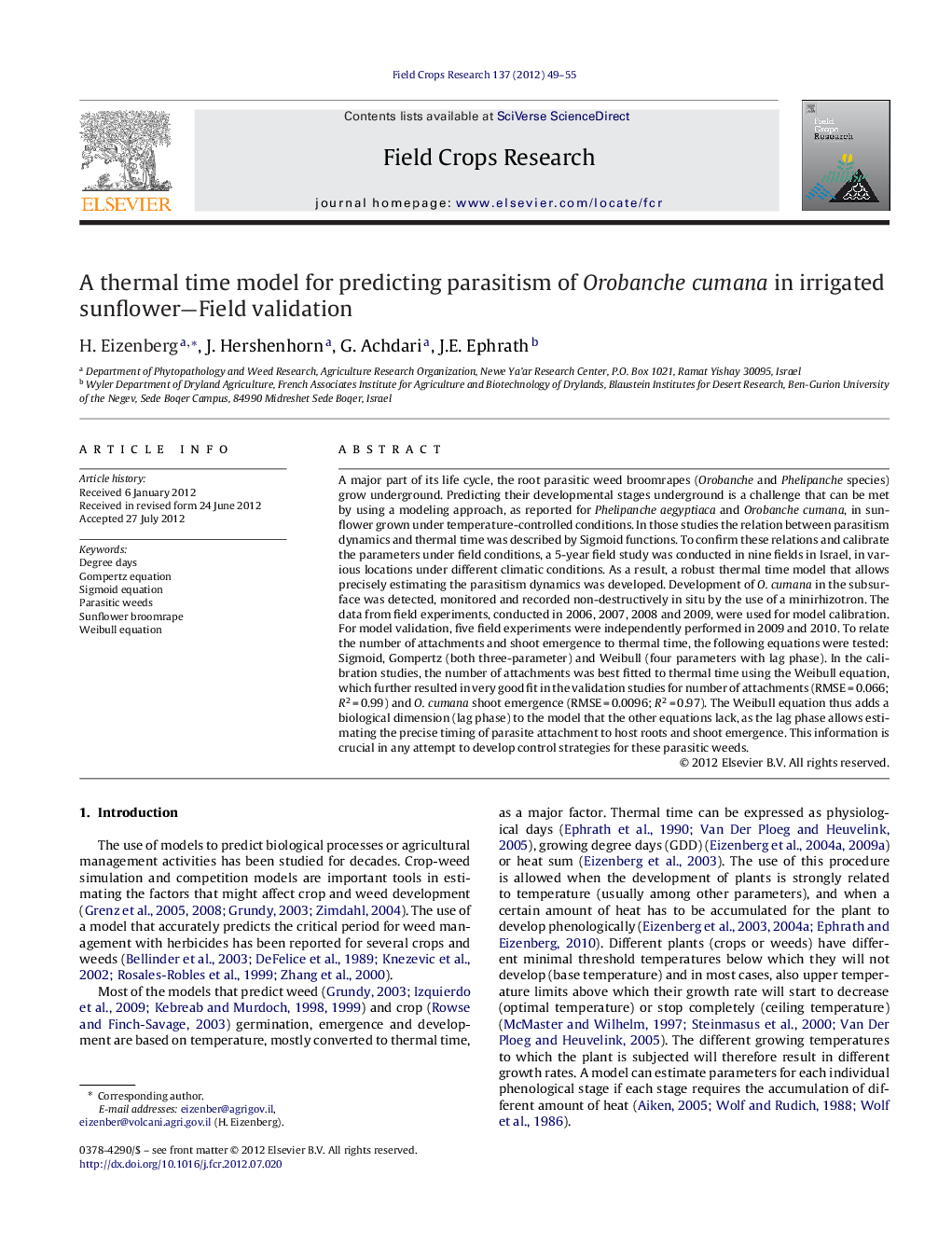| کد مقاله | کد نشریه | سال انتشار | مقاله انگلیسی | نسخه تمام متن |
|---|---|---|---|---|
| 4510299 | 1624726 | 2012 | 7 صفحه PDF | دانلود رایگان |

A major part of its life cycle, the root parasitic weed broomrapes (Orobanche and Phelipanche species) grow underground. Predicting their developmental stages underground is a challenge that can be met by using a modeling approach, as reported for Phelipanche aegyptiaca and Orobanche cumana, in sunflower grown under temperature-controlled conditions. In those studies the relation between parasitism dynamics and thermal time was described by Sigmoid functions. To confirm these relations and calibrate the parameters under field conditions, a 5-year field study was conducted in nine fields in Israel, in various locations under different climatic conditions. As a result, a robust thermal time model that allows precisely estimating the parasitism dynamics was developed. Development of O. cumana in the subsurface was detected, monitored and recorded non-destructively in situ by the use of a minirhizotron. The data from field experiments, conducted in 2006, 2007, 2008 and 2009, were used for model calibration. For model validation, five field experiments were independently performed in 2009 and 2010. To relate the number of attachments and shoot emergence to thermal time, the following equations were tested: Sigmoid, Gompertz (both three-parameter) and Weibull (four parameters with lag phase). In the calibration studies, the number of attachments was best fitted to thermal time using the Weibull equation, which further resulted in very good fit in the validation studies for number of attachments (RMSE = 0.066; R2 = 0.99) and O. cumana shoot emergence (RMSE = 0.0096; R2 = 0.97). The Weibull equation thus adds a biological dimension (lag phase) to the model that the other equations lack, as the lag phase allows estimating the precise timing of parasite attachment to host roots and shoot emergence. This information is crucial in any attempt to develop control strategies for these parasitic weeds.
► A thermal time model for parasitism of Orobanche cumana in sunflower was developed.
► A Weibull equation (with lag phase) robustly predicts the parasitism dynamics.
► The model was validated in five years of field experiments.
Journal: Field Crops Research - Volume 137, 20 October 2012, Pages 49–55